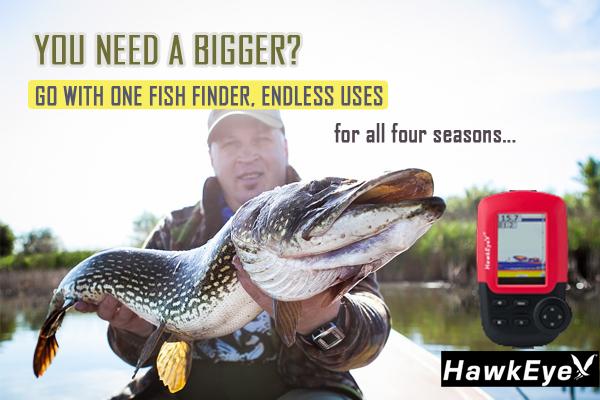
If you have ever watched the film jaws you may have chuckled at how two fishermen tried to catch Jaws using a holiday roast. How lucky for them they were unsuccessful as good old Capt Quint estimated Jaws weight at around 6,000 pounds.
Actually, Jaws was indeed a movie myth, for the largest shark ever caught weighed a measly 2,664 pounds, caught by an Australian Fisherman in 1959. However, 2,664 pounds is still one heck of a large fish. The second-largest fish was a tiger shark that weighed in at 1785 lbs.
The largest marlin ever caught with rod and reel was bigger. In 1970, a party of anglers out of Oahu, Hawaii reeled in an 1805 lb Pacific Blue Marlin. Interestingly, when the fish was cut open, they found a 155-pound yellowfin tuna in its belly.

Close to that is the record bluefin tuna caught by Fisherman Ken Fraser off of Nova Scotia in 1979. It took Ken just 45 minutes to reel the fish in close enough to be hauled into the boat by a gaffe.
The bluefin tuna spent 10 hours in the ship's hull dehydrating before it was weighed in at 1496 pounds, so it was possibly even bigger. Bluefin tuna are considered relatively scarce today, with the average price for a 1,000-pound Bluefin going at around $10,000.
At today's prices, Ken's bluefin may have fetched $50,000 or more.
Fishing legend Alfred C. Glassell Jr caught a Black Marlin in the waters of Peru, way back in 1953 which weighed in at 1,560 lbs. This record black marlin holds the longest, continuous, International Game Fish Association record.
Close to that was the Atlantic Blue Marlin caught in Brazilian water in 1992. This Atlantic Blue marlin weighed in at 1402 lbs.
Fisherman Lou Marron set a record for a swordfish catch in 1953 in Chilean waters with a swordfish that weighed in at 1182 pounds. It took him nearly two hours to reel the swordfish in on 39 thread line.
Outside of a few sharks, the next largest fish was Goliath Grouper caught in 1961 in Florida waters. It weighed 680 lbs.
Freshwater fish
Freshwater fish are notably smaller, but still can be monsters.
Although the recorded largest fish was a 468-pound white sturgeon caught in 1983 in San Pablo, CA, white sturgeon in Russia is known to be as large as 2,000 pounds. No information is available about how they were caught.
The largest unofficial catch for a white sturgeon was in 2012 in British Columbia, estimated to be 1100 pounds.
Second, to the white sturgeon are the Mekong giant catfish. The largest Mekong giant catfish weight 646 pounds, and was caught in Thailand in 2005. Unfortunately, the Mekong catfish have been drastically overfished, and as much as 95 percent of them have been extinguished.
People keep fishing for them, however, particularly in Thailand, where the fish has a reputation for bringing long life, wisdom, and good luck.
The Nile perch is next on our list. While many people think of small lake perch, In December of 2000, Angler William Toth pulled a massive 230 lb, Nile Perch, out of Lake Nassar in Egypt.
Actually Nile perch are said to get as large as 500 pounds, but the 230 pound Nile perch that Toth caught stands as the world's record.
Airipama, Alligator Gar's, and Taimen Trout round out the list of biggest fish. The largest Airipama, on record, was recorded at 440 pounds and was nearly 10 feet in length. Airipama can be found throughout South America.
Alligator Gar's get to as large as 325 pounds and are found mostly in the Gulf Coast region of Texas and Mississipi.
Taimen trout, mostly found in Russia, get to be as big as 230 pounds.
What about game fish
Game fish are notably smaller but still can be large. For example, the largest Northern Pike ever caught was reeled in 1986 in a German Lake and weighed 55 lbs.
The largest musky weighed in at 67 pounds. Meanwhile, the largest walleye caught weighed in at 25 lbs.
In 1949, a fisherman in Alaska caught a 126 lb salmon. In 1932 a bass weighting 22 lbs were caught in Southern Georgia.
How long does it typically take to reel a big fish in?
Most fishermen can plan on spending a minimum of an hour and more often two hours fighting a large fish. It's tiring, back-breaking work, but even women and the elderly can do it if they are coached correctly.
The main thing is for the fish to not snap the line, which happens more often that most fishermen will admit.
It's not something that can be rushed, a fisherman needs to let the fish come to them.
Having the best of equipment, and in the particular high test, line is extremely important. An 80 to 130-pound filament line is often required. Rod and reel sets for deep-sea fishing can run around $500 or more.
Naturally, for freshwater fishing, the expenses are cheaper, and some people get by with a basic rod and reel combo that costs less than $30 or so. In fact, on Amazon, you can buy a telescopic fishing rod and reel for as cheap as $11.
Remember, the fish at the other end doesn't care how little or how much you spent on a rod and reel. Even a garage sale rod for $2 will work.
Of course, they don't work as well in the deep ocean, but for local gamefish, whether it's a 50 lb monster or a 12-ounce perch or 20-ounce bluegill, nothing beats having a Hawkeye Fish Finder by your side.
With a Hawkeye Fish Finder, whether you are fishing from shore, floating in an inner tube, or tooling around in a $15,000 bass boat, fishing is just out and out more fun when you find fish.
For their return on investment, nothing is more beneficial for your most successful fishing trips than a Hawkeye Fish Finder.
